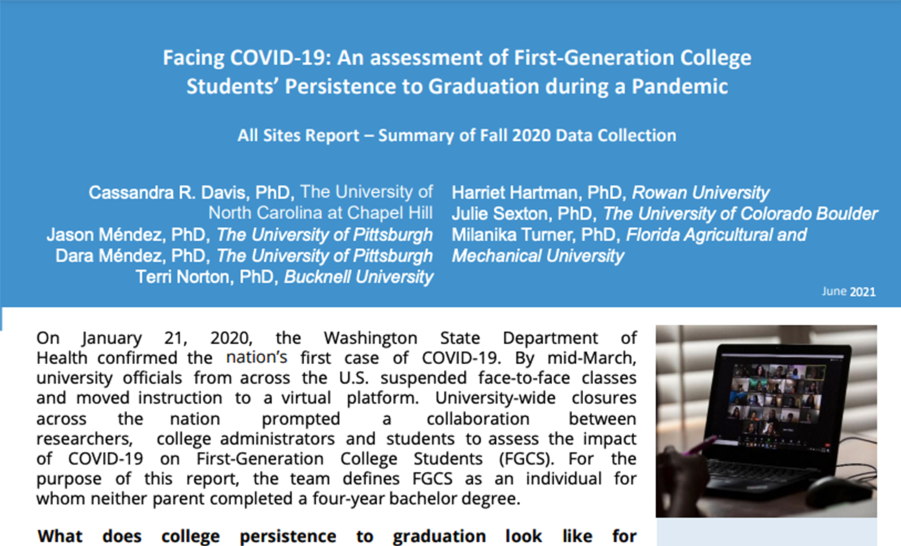#AdvocateFirstgen: Three Ways to Create Awareness About Relief Legislation that Benefits First-gen Students
FirstGen Forward / January 05, 2021

On December 21, 2020, Congress passed a $900 billion COVID-relief package and a $1.4 trillion government funding package giving pandemic aid to Americans, while securing federal agency operations through September 2021. The president signed the measure into law on Dec. 27.
The Consolidated Appropriations Act, 2021 includes more than $20 billion in formula funding to higher education institutions, including direct financial aid grants to current undergraduate students. The legislation included expanded eligibility criteria and increases in Pell grant funding and simplification of the Free Application for Federal Student Aid (FAFSA).
The higher education funding in the COVID relief bill includes over $20 billion for the Higher Education Emergency Relief Fund (HEERF) to which institutions can apply. Institutions have some flexibility in how they can use these funds such as for lost revenue, reimbursement for expenses, technology costs due to the shift to online learning, financial aid for students. The bill directs schools to prioritize grants for students with exceptional need.
Spreading awareness about emergency funds, broadband access discounts, and eligibility criteria necessary to receive them will assist first-generation students in receiving critical aid.
A section-by-section analysis of both the Coronavirus Relief and Appropriations provisions prepared by the National Conference of State Legislatures outlines key funding and policy provisions. Provisions especially relevant to first-generation students in the near term include:
-
Monthly discounts for eligible households (including Pell grant recipients) for internet services and a subsidy for low-cost computers or tablets;
-
Increases in Supplemental Nutrition Assistance Program (SNAP) benefits and extension of SNAP eligibility to college students enrolled at least half-time and who are either eligible for a federal or state work-study program or have an expected family contribution (EFC) of zero;
-
Directions for higher education institutions to provide at least the same amount of funding in emergency financial aid grants to students as required under the March 2020 CARES Act; and
-
An increase of $150 for a maximum Pell Grant award of $6,495 for 2021-2022.
Other relevant provisions include simplification of the FAFSA, reducing the number of questions from 108 to 36. While this action is intended to increase the number of students completing the form and qualifying for federal financial aid, the new form will not be effective until the 2023-2024 academic year.
Higher education professionals can #AdvocateFirstgen by:
-
Lobbying institutional leaders to increase funding they receive through HEERF to direct student aid;
-
Coordinating with institutional leaders to review and, if necessary, revise existing notification strategies and distribution methods targeting students eligible for any emergency aid grant funding the institution awards; and
-
Encouraging first-generation students to complete the FAFSA to qualify for student aid even though the simplified FAFSA version will not be effective immediately.
As the new semester begins, being aware of relief funds institutions are awarded is important. Spreading awareness about emergency funds, broadband access discounts, and eligibility criteria necessary to receive them will assist first-generation students in receiving critical aid.
What strategies have helped you to successfully champion first-generation students? Share your perspective on first-generation student advocacy and pertienent policy issues across social media with #AdvocateFirstgen.





